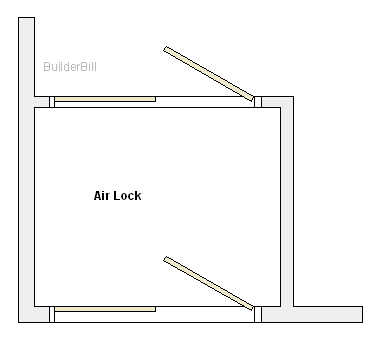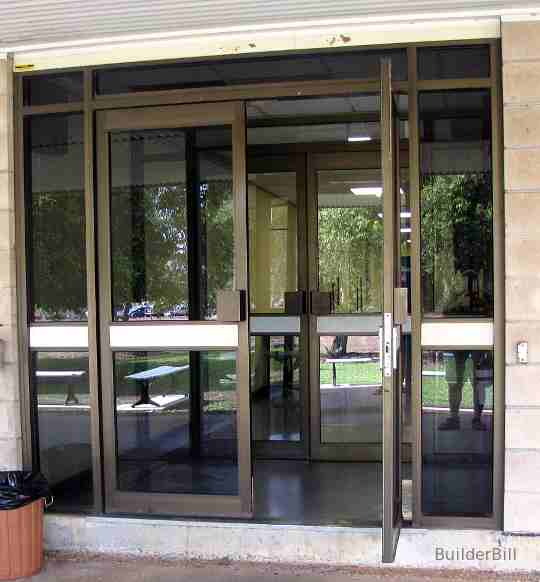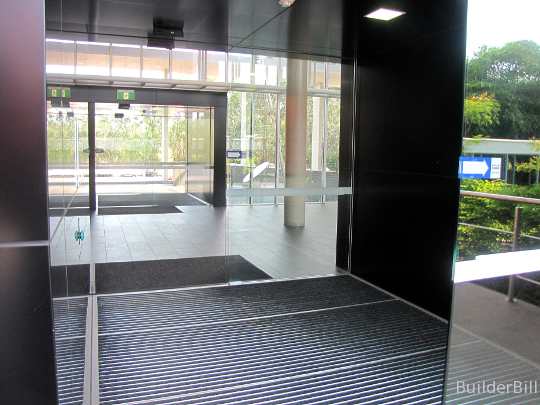 |
||||||
Graphical Construction Glossary >> Doors. >> Door types >> Air Locks
Used almost always in public and semi-public building and where the traffic is heavy, this device is a method of primarily of conserving energy. As in saving cooled or heated air from escaping outside.
Above is a photo of an external double door leading into an air lock with another set of doors behind it. In this case the interior walls enclosing the ceiling just go up to the ceiling, because it is not very high, but in buildings that have high ceilings then it is normal to put a lower ceiling over the airlock area.
In this photo the doors are automatic glass sliders and they are set to work independently from each other. In some critical cases, like in security or to laboratories and the like then both set of doors can not be opened at the same time. The term of course is used in many cases where conserving air has nothing to do with it. An arrangement of doors like this can be used zoos for stopping the escape of animals. Double sets of security gates are often seen also. If you didn't find exactly what you are looking for try this search tool that will search the site and the web. "What can be added to the happiness of a man who is in health, out of debt, and has a clear conscience? "When we build, let us think that we build for ever."John Ruskin 1819-1900 |
Hire Equipment  Furniture Fittings - Architectural Hardware - Electronic Locking Systems - Technical Hardware BuilderBill sponsorship Glossary Pages.Roof Glossary and Roofing Formwork Glossary and other tempory work. Hand Tools Glossary Power Tools Glossary Asbestos Glossary Woodwork Glossary Stair Glossary Concrete Glossary Masonry Glossary doors Glossary BuilderBill Books Building Maths  Stair Design  Asbestos Book |
|||||
|
|
||||||
|
Please Note! The information on this site is offered as a guide only! When we are talking about areas where building regulations or safety regulations could exist,the information here could be wrong for your area. It could be out of date! Regulations breed faster than rabbits! You must check your own local conditions. Copyright © Bill Bradley 2007-2012. All rights reserved. |
||||||


